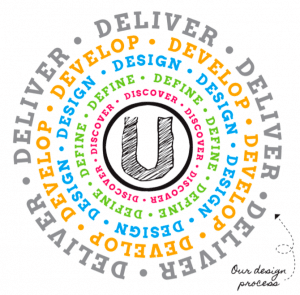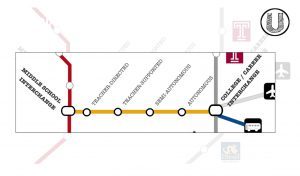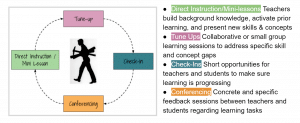Leveling the Playing Field
CompetencyWorks Blog
Asynchronous Learning in High-Poverty, Competency-Based Urban High Schools

At the U School we are big believers in the notion that skillful, independent learning is central to leading a meaningful and productive life…But what happens if students enter high school with minimal experience of this level of ownership? Over the past two and a half years, our faculty and leadership has used our design process– with Users at the center (inset, 2015)–to explore answers to this question. What we’ve come up with is still a work in progress, but we are excited by significant early indicators that students are truly becoming self-directed learners as they immerse themselves in the school community.
How do we know? We organized all coursework and student groupings around our 4-stage developmental framework.
The 4 Stages of the U School Learner

At the U School, students learn about these 4 stages, undertake a self-assessment that helps them identify their specific stage in each content area, and then work with the adults in the building to put together a program that encourages growth towards increasing independence, using their identified level of autonomy as the starting point. Every 10 weeks students and adults come back together to reassess where students are on the continuum to ensure that programs reflect ongoing student growth and development: sometimes students realize they need more support, other times they are ready to move into more autonomous learning experiences.

Our goal: By graduation all students will be competent autonomous learners.
What we know is that students begin this journey in different places, need differing levels of support, and advance towards autonomy at different rates. Moreover, this is variable not just across a group of students, but for each individual student: A student may immediately jump into the autonomous stage for learning poetry, but request a teacher-directed experience for Algebra. This kind of variation is absolutely the norm at the U School, and we are learning to adapt to it.
Check out U School teachers & students describing their work across the 4 learning stages in this student-created video. Let’s Go! >> http://tinyurl.com/jry9bw4
…And What about the Adults?
When we first developed the 4 stages of the student learner, our focus was on young people, not ourselves. In the process, we stumbled upon a wonderful symmetry between the students’ developmental process and that of the U School’s staff: As the adults working with students, each of us also fell along the same continuum: a few of us were ready to jump right into supporting students with semi-autonomous learning experiences (next year will be the first year we pilot the autonomous learning stage). Others are most comfortable leading teacher-directed courses.
Rather than create a deficit-based model that assumes that everyone should be competent at autonomous learning (staff and students), we ask each adult to both play to their strengths, while also pushing their learning edge by creating increasing opportunities for students to take charge of their learning. In every classroom, adults are engaged in 4 key activities with students. The amount of time spent on each activity depends on student needs, and their placement along the learning continuum: In the teacher-directed classroom, direct instruction is more predominant. In the semi-autonomous classroom, check-ins and conferencing are more frequent:

While our students move towards autonomous learning, our team is moving towards giving up control of student learning…and the variation amongst us is embraced as part of our own learning trajectory.
See also:
- Who’s Leading the Way?
- Mastery Motivates Students: “No Way” vs. “Not Yet”
- Cumberland High School: Starting with Proficiency-Based Grading
We have been collaborators for the past three years. Neil is the Principal of Philadelphia’s U School and Dixie is a leadership coach from reDesign, LLC. We met as Neil was designing and launching the U School as part of the Carnegie Corporation’s Opportunity by Design Initiative to support #NewSchoolModels. Access our iNACOL16 Slidedeck here.